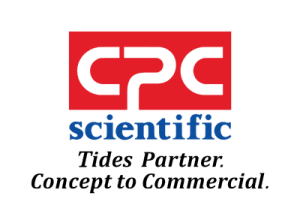Peptide receptor radionuclide therapeutics (PRRT) consist of three key components, a cytotoxic radionuclide chelate, a linker, and the targeting peptide which is designed to target species that are overexpressed in different cancer cells. Peptides are a popular modality of choice due to their small size, positive pharmacokinetics, high affinities, and non-toxic properties.
Andrew Kennedy, Director of Business Development at CPC Scientific explained that CPC Scientific is heavily involved in the design of the chelate stage. Kennedy said: “Being able to design the chelate so that it binds effectively to the receptor that has various kinds of functional groups to increase that binding and that it fits in the binding pocket essentially.”
CPC Scientific looks for high labelling efficiency in their chelates, which increases the activity. Kennedy presented a manufacturing case study on DOTAGA-labelled urea-based PSMA inhibitors. PSMA-targeted peptide therapeutics are heavily overexpressed, which is a key advantage when targeting this type of receptor. They are overexpressed by about 100—to 1000-fold in normal tissue and are expressed at all stages of the disease.
Kennedy explained that urea-based ligands are favoured over phosphorous and thiol: phosphorous and thiol struggle to penetrate the blood-brain barrier and their insufficient metabolic stability. A team of researchers at CPC tested three synthesis approaches: fragment condensation approach, solid passe with resin coupling, and optimised solid phase synthesis. A comparison of three synthesis methods showed that the first two performed poorly. Yet, the optimised solid-phase synthesis yielded the best results: a crude purity of 85 -90% and a final purity of 99.3%.
Kennedy attributed the success of the DOTAGA to the fact that the synthesis route was successful, to begin with, and they have some proprietary cleavage technology that allows for fast and efficient cleavage of the peptide, the protecting groups, and the total yield.
Additionally, Kennedy introduced TRAP chelates and outlined their main advantages: “TRAP is more stable than DOTAGA over a large pH range, chemically inert in acidic and alkaline conditions.” Furthermore, TRAP has high selectivity for Gallium, which is crucial for labelling the isotope.
CPC Scientific also has a large manufacturing site in Hangzhou China with facilities dedicated to synthesis and purification. Kennedy spotlighted CPC Scientific's expertise in PRRT manufacturing, a new up-and-coming area in pharmaceutical manufacturing.



